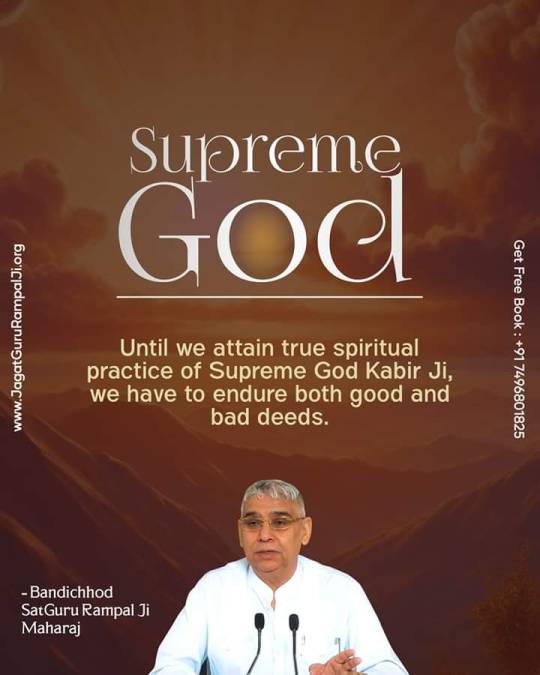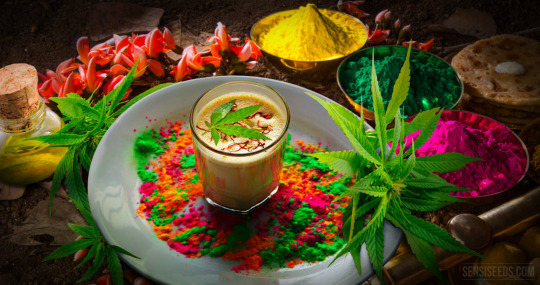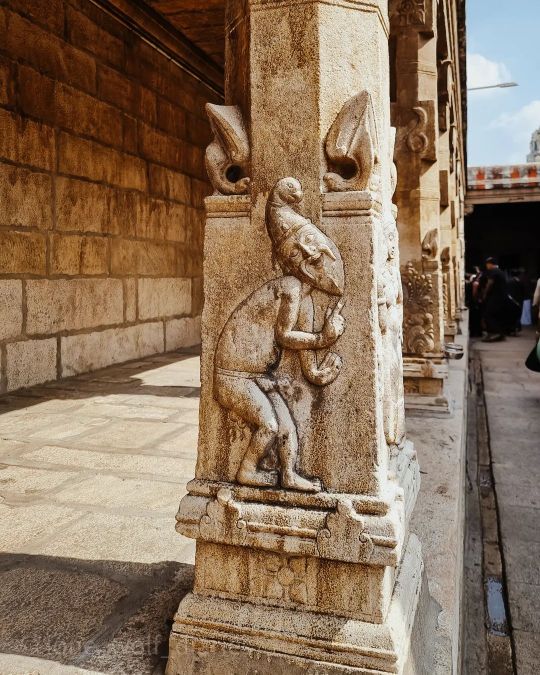#Indianhistory
Explore tagged Tumblr posts
Text



On August 1st in history,🌍📜 Pakistan joined SEATO 🇵🇰🤝, Gandhi launched the Non-Cooperation Movement 🇮🇳✊, and MTV revolutionized music📺🎶
#Biographiness#Biograghines#TodayInHistory#TIH#OnThisDay#OTD#HistoryFacts#August1#PakistanHistory#SubcontinentHistory#WorldHistory#SEATO#ColdWar#NonCooperationMovement#MahatmaGandhi#IndianHistory#MTV#MusicHistory#PopCulture#PeacefulProtests#StrategicAlliances#RevolutionaryMoments
2 notes
·
View notes
Video
youtube
नालंदा विश्वविद्यालय: 700 साल का ज्ञान और उसका विनाश
नालंदा विश्वविद्यालय, प्राचीन भारत का एक अद्वितीय शिक्षा का केंद्र, जिसने शिक्षा के क्षेत्र में नए कीर्तिमान स्थापित किए थे। यह विश्वविद्यालय 5वीं शताब्दी में स्थापित किया गया था और यह अपने समय का सबसे बड़ा और सबसे प्रतिष्ठित शिक्षा संस्थान था। इस विश्वविद्यालय ने लगभग 700 वर्षों तक ज्ञान का प्रसार किया और पूरे विश्व से छात्र यहां अध्ययन करने आते थे।
नालंदा विश्वविद्यालय का परिसर बहुत विशाल था, जिसमें दस बड़े मठ और कई छ���टे-छोटे मंदिर थे। यहां पर लाइब्रेरी भी थी, जिसे 'धर्मगंज' कहा जाता था, जिसमें हजारों पांडुलिपियाँ और ग्रंथ संग्रहीत थे। यह लाइब्रेरी तीन भवनों में विभाजित थी - रत्नसागर, रत्नोदधि और रत्नरंजक। यह विश्वविद्यालय न केवल बौद्ध धर्म के अध्ययन का केंद्र था, बल्कि यहां अन्य विषयों जैसे गणित, खगोलशास्त्र, चिकित्सा, तर्कशास्त्र और कला का भी अध्ययन होता था।
नालंदा विश्वविद्यालय में प्रवेश पाना बहुत कठिन था। यहां के विद्वान शिक्षक अपने समय के सबसे ज्ञानी और बुद्धिमान व्यक्तित्व थे। ह्वेनसांग, जो एक चीनी तीर्थयात्री थे, उन्होंने नालंदा में 17 साल तक अध्ययन किया और अपनी यात्रा वृतांत में इस विश्वविद्यालय की महानता का विस्तार से वर्णन किया है।
12वीं शताब्दी में बख्तियार खिलजी के आक्रमण के बाद नालंदा विश्वविद्यालय को जला दिया गया। कहा जाता है कि यहां की लाइब्रेरी में इतनी पुस्तकें थीं कि उन्हें जलने में कई महीने लगे। यह एक ऐसा आघात था जिससे भारतीय शिक्षा प्रणाली कभी उबर नहीं पाई।
नालंदा विश्वविद्यालय का विनाश भारतीय उपमहाद्वीप के सांस्कृतिक और शैक्षिक धरोहर पर एक गहरा आघात था। लेकिन इसके बावजूद, नालंदा का इतिहास आज भी हमें प्रेरित करता है और हमें यह याद दिलाता है कि भारत में शिक्षा और ज्ञान का कितना समृद्ध इतिहास रहा है।
आज नालंदा विश्वविद्यालय के अवशेष बिहार के नालंदा जिले में स्थित हैं, जो पर्यटकों और इतिहासकारों के लिए एक प्रमुख आकर्षण का केंद्र हैं। 2014 में, नालंदा विश्वविद्यालय को पुनःस्थापित किया गया और यह नए युग के छात्रों को शिक्षा का प्रकाश प्रदान कर रहा है।
#youtube#nalandauniversity#ancientindia#indianhistory#indianculture#historylovers#IndiasGloriousHistory#nalanda
2 notes
·
View notes
Text
#GodMorningThursday
Supreme God ....
Until we attain true spiritual
practice of supreme god kabir saheb Ji, we have to endure both good
and bad deeds.
Download our Official App "Sant Rampal Ji Maharaj
#SantRampajiQuotes

#kabirisgod#spiritual#satlok#enlightenment#worship#devotional#bhaktiyoga#indianhistory#saintrampalji
2 notes
·
View notes
Text
🕌✨ Exploring the Majesty of Mughal Court Carpets 🌺🎨
Court carpets are carpets that embezzle a courtroom, a durbar hall or any large place of significance. Court carpets are prestigious because they make the first impression for anyone who visits this place. In India, court carpets were of great significance because of the long rulings of several empires and dynasties. These were very prevalent during Mughal history. Dive into the rich tapestry of Mughal history, where art and politics interwoven to create the breathtaking court carpets that adorned the imperial palaces of India. 🇮🇳✨
🌿 What Are Mughal Court Carpets?
Immerse yourself in the world of Mughal court carpets, hand-woven under the meticulous supervision of the ruling Mughals in Agra. These exquisite creations were not just floor coverings; they were masterpieces that symbolized social standing and financial prowess. 🧶🏰

🕌 Weaving Islamic Carpets Through Time
Ancient tradition of weaving Islamic carpets, passed down through generations in diverse communities and nomadic camps. From functional necessities to works of art, these carpets graced courtrooms, reception areas, and even hung as display tapestries on walls. The Mughals took this tradition to new heights, commissioning jewelled carpets that became exemplary of Islamic art. 💎🎨
👑 Mughal Court Carpets: A Timeless Legacy
The reign of Mughal stayed from 1526 to 1858, where they not only conquered vast territories but also nurtured a passion for carpet weaving and manuscript writing. Inspired by Persian art, Mughal carpets evolved with a distinctive visual lexicon, featuring intricate floral patterns, lattice designs, and realistic scenes from court life. 🎭🌸
🎨 Design Themes and Inspirations
The diverse aesthetic approaches of Mughal palace rugs, showcases naturalistic scenes, abstract floral patterns, and the incorporation of Safavid motifs. Explore the influence of Shah Jahan's patronage, especially in the Taj Mahal, and the vibrant designs of Mughal prayer rugs and hunting carpets that depict the reality of life in vivid detail. 🦌🌿
👑 Patrons and History
Akbar was a Mughal ruler who initiated imperial carpet weaving in 1556. Later, Shah Jahan, the visionary ruler, expanded this practice during his reign. Mughal court's diplomatic ties with European traders influenced their carpet designs with elements reminiscent of European tapestries. The legacy of Mughal carpet patterns continues to inspire luxury, elegance, and unwavering quality worldwide. 🌏🌟
🎭 Takeaway
In summary, the court carpets of the Mughals transcend time, leaving an indelible mark on the design aesthetic of handmade rugs. Beyond their beauty, these carpets were symbols of financial status and political power, a legacy that persists in the luxurious and timeless art of Mughal court carpets. 🕌🌟
2 notes
·
View notes
Text
#TravelIndia#ExploreIndia#DiscoverIndia#IncredibleIndia#IndianCulture#Tourism#TravelBlog#travelindia#TravelTips#TravelAdventures#Wanderlust#TravelGuide#TravelDestinations#TravelPhotography#TravelExperiences#IndianHeritage#IndianHistory#TouristSpots#IndiaTour#VacationIdeas#TravelItinerary#TravelBlogger#TravelEnthusiast#TravelLover#TravelLife#MustVisitIndia#BucketListDestinations#TravelGram#InstaTravel#TravelWebsite
4 notes
·
View notes
Text
The Ancient Art of Bhang Lassi: A Mellow Cannabis-Infused Beverage from India

Introduction
For over a thousand years, the Indian subcontinent has enjoyed a unique and traditional cannabis-infused beverage called bhang lassi. This drink is made from a combination of milk, spices, and bhang – a paste created by grinding marijuana leaves and flowers. While it may seem like an intoxicating concoction, the preparation method of bhang lassi ensures that it delivers a milder effect compared to other cannabis products. In this article, we will explore the history of bhang lassi, its cultural significance, and the science behind its gentle impact.
The History and Cultural Significance of Bhang Lassi
Bhang lassi has deep roots in Indian culture and has been consumed for various purposes, including medicinal, religious, and recreational. It is often associated with the Hindu deity Lord Shiva, who is believed to have used bhang to attain a state of meditation and relaxation. During the annual festival of Holi, bhang lassi is consumed as a symbol of breaking social barriers and promoting unity among people. In addition to its spiritual significance, bhang lassi has been used in Ayurvedic medicine for centuries. It is believed to help treat various ailments such as fever, digestive issues, and anxiety. Moreover, bhang lassi is also consumed for its mild euphoric effects, which are considered less potent than other forms of cannabis consumption.

The Science Behind Bhang Lassi's Mild Effects
Despite containing up to an ounce of cannabis flowers and leaves, bhang lassi does not deliver an overpowering effect. This is because the preparation method prevents the full extraction of THC, the psychoactive compound responsible for the "high" experienced when consuming cannabis. When making bhang lassi, the first step involves creating a cannabis water tea. This process does not heat the bhang above the temperature at which THC acid becomes psychoactive. As a result, only a small portion of the THC is activated and released into the water. Furthermore, since cannabinoids are not water-soluble, the majority of them remain unextracted during this step. The addition of milk to the cannabis water tea further dilutes the concentration of THC. Fats in the milk help bind with the remaining cannabinoids, but the overall effect remains mild due to the limited extraction process. This intentional preparation method aligns with the cultural and medicinal purposes of bhang lassi – providing a gentle, soothing experience rather than an overwhelming high.
Conclusion
Bhang lassi is a fascinating example of how ancient cultures have harnessed the power of cannabis for spiritual, medicinal, and recreational purposes. Its unique preparation method ensures that the drink delivers a milder effect, making it suitable for various occasions and users. As interest in cannabis-infused beverages grows globally, the traditional art of bhang lassi serves as a reminder of the importance of understanding and respecting the cultural context of such practices.
#cannabis#cannabishistory#bhang#bhanglassi#indian culture#indianhistory#ancienthistory#cannabisrituals#cbd#feelgreatagain#budandtender
2 notes
·
View notes
Text

Our infallible Sir Winston Churchill
#CapitalismKills#political#statusquo#worldhistory#English#history#historymatters#british#unitedkingdom#History#india#indianhistory#indianhistoryfacts#colonialism#imperialism#socialjustice#individualism#historyfacts#europe#internationalcommunity#society#westerneurope#liberalism#democracy#foreignpolicy#capitalism#capitalismkills#clownworld
3 notes
·
View notes
Text

✨ Ignite Your Creativity with Rabindranath Tagore at NPS Kudlu! 🏫💡
www.npskudlu.com
#tagore#rabindranath#rabindranathtagore#philosophy#kolkata#bengali#bengal#india#19thcentury#janaganamana#nationalanthem#westbengal#history#indianhistory#news#spirituality#schools#school#kids#children#classroom#teachers#Parents#family#mom#dad#bangalore#nps#npskudlu#nationalpublicschool
2 notes
·
View notes
Text

Looking for a spiritual escape?
Look no further than the Lakshmi Narasimha Temple of Nuggehalli, Hassan!
This stunning temple is a true gem of South India, with intricate carvings and a peaceful atmosphere that will transport you to another world.
Whether you're a devout follower of spirituality or simply seeking a moment of peace and reflection, this temple is a must-visit destination. So come and soak up the serene beauty of Nuggehalli's Lakshmi Narasimha Temple – you won't be disappointed! 🙏🏽✨
To know more about the place, feel free to click on the link below👇🏻
Do follow us @mapsandcutlery for more such content!!
#Nuggehalli#mapsandcutlery#maps_and_cutlery#travel destinations#travelstories#weekendfun#weekend getaway#must visit#plan your weekend#Hoysala#indianhistory#architecture#ancient culture#ancienttemples#spiritual vibrations#traveleverywhere#portraitphotography#bangalore#indian tourism#karnataka#travel Karnataka
6 notes
·
View notes
Text

Remembering the Martyrs: Shaheed Diwas 23 March.
23 March is the anniversary of the day when three of India's most iconic freedom fighters - Bhagat Singh, Rajguru, and Sukhdev - were hanged to death by the British colonial rulers. These young revolutionaries were just in their twenties, but they had already become symbols of the struggle for freedom in India. Their courage, sacrifice, and commitment to the cause of a free and independent India continue to inspire generations.
As we pay tribute to our martyrs on Shaheed Diwas, let us also renew our commitment to the values of freedom, justice, and equality that they stood for. Let us strive to build a society that is worthy of their sacrifices and aspirations. And let us never forget the debt of gratitude that we owe to these brave souls who fought and died for our freedom.
Jai Hind!
Source : bit.ly/3yWV0Dc
#ShaheedDiwas#23March#Bravehearts#FreedomFighters#IndianHistory#SaluteToMartyrs#JaiHind#India#FreedomStruggle#Martyrs#RememberingTheBrave#Respect#NationalHeroes#NationalMartyrsDay#Courage#Patriotism#NationFirst#Tribute#Instabio#people#nevergiveup#education#yadavkoolboy#yadavhewrote
2 notes
·
View notes
Photo

One of the most interesting carving incame across is this of a jester. Never i've seen a jester being carved in a temple premises, that to dedicated to lord shiva. I tried to study and ask the local pujari, but they had no answer. @praveenet.. Can you please share your thoughts, throw some light on this unique carving in the temple. I was speechless seeing this in the temple pillars. #ancienttemples #ancienttemple #temples #ancient #templesofindia #ancientarchitecture #templephotography #oldtemple #ancientindia #incredibleindia #templearchitecture #india #temple #indiantemples #hindutemples #indianhistory #indianmonuments #indianarchitecture #heritageofindia #findingtemples #indiantemplearchitecture #indiantemple #cambodia #travelphotography #architecturephotography #discoverindia #instagram #travelindia #indiantourism #templevisit (at Perur Pateeswarar Temple) https://www.instagram.com/p/Cne3NJ1S97Z/?igshid=NGJjMDIxMWI=
#ancienttemples#ancienttemple#temples#ancient#templesofindia#ancientarchitecture#templephotography#oldtemple#ancientindia#incredibleindia#templearchitecture#india#temple#indiantemples#hindutemples#indianhistory#indianmonuments#indianarchitecture#heritageofindia#findingtemples#indiantemplearchitecture#indiantemple#cambodia#travelphotography#architecturephotography#discoverindia#instagram#travelindia#indiantourism#templevisit
2 notes
·
View notes
Text
The Lost Saraswati River: India’s Ancient Mystery 🌊✨

Did you know about the Saraswati River? Once described as “mighty and pure” in the Rig Veda, this ancient river mysteriously vanished thousands of years ago.
Was it lost to tectonic shifts, climate changes, or something even more intriguing? 🤔 Modern science has traced its ancient path, but the full story remains unsolved.
🎥 Discover the mystery in this video: The Lost River of India: Unraveling the Saraswati Mystery
What’s your theory about the Saraswati River?
#saraswatiriver#ancientmysteries#hindumythology#lostcivilizations#vedicmythology#indianhistory#ancientindia#forgottenlegends#historybuff#mythicalrivers#discovermore#curiousminds#historyuncovered#spiritualmysteries#explorehistory
1 note
·
View note
Text
🌍💬 “I hate Indians. They are beastly people with a beastly religion.” – Winston Churchill.
This controversial quote often sparks heated debates about one of history’s most iconic leaders. 🧐 Was Churchill a brilliant wartime strategist or a figure riddled with racist beliefs? Let’s explore the context, his policies, and the devastating impact of his decisions, like the Bengal Famine of 1943. 📜✨ Can we separate the man from his actions, or does this quote reveal a deeper truth about…
#ColonialHistory#colonialism#DailyInspiration#DailyMotivation#Decolonize#HistoricalDebate#india#IndianHistory#LearnOnTikTok#RacismInHistory#WinstonChurchill
0 notes
Text

#SavitribaiPhule #Women #Empowerment #KritagyataTrust #Gratitude #IndianHistory #Teacher #School #Students #CSR #Education #NGO #Charity #Nonprofits #Volunteer
#SavitribaiPhule#Women#Empowerment#KritagyataTrust#Gratitude#IndianHistory#Teacher#School#Students#CSR#Education#NGO#Charity#Nonprofits#Volunteer#charity in bangalore#ngo in bangalore
0 notes
Text
Veer Bal Diwas: Honoring the Supreme Sacrifice of Sahibzadas
https://bharatbloggers.com/veer-bal-diwas-honoring-the-supreme-sacrifice/
#SupremeSacrifice#VeerBalMartyrs#SacrificeForNation#MartyrsOfIndia#HistoricalHeroes#IndiaRemembers#VeerBalLegacy#HonoringTheBrave#SacrificeAndValor#IndianHistory#CourageAndHonor
0 notes
Text
Happy Vijay Diwas

Wishing everyone a joyous and prosperous 𝐕𝐢𝐣𝐚𝐲 𝐃𝐢𝐰𝐚𝐬! 🎉 May this day inspire strength, unity 🤝 and peace for all. Let's celebrate the spirit of victory 🏆 and patriotism 🇮🇳 together!
0 notes